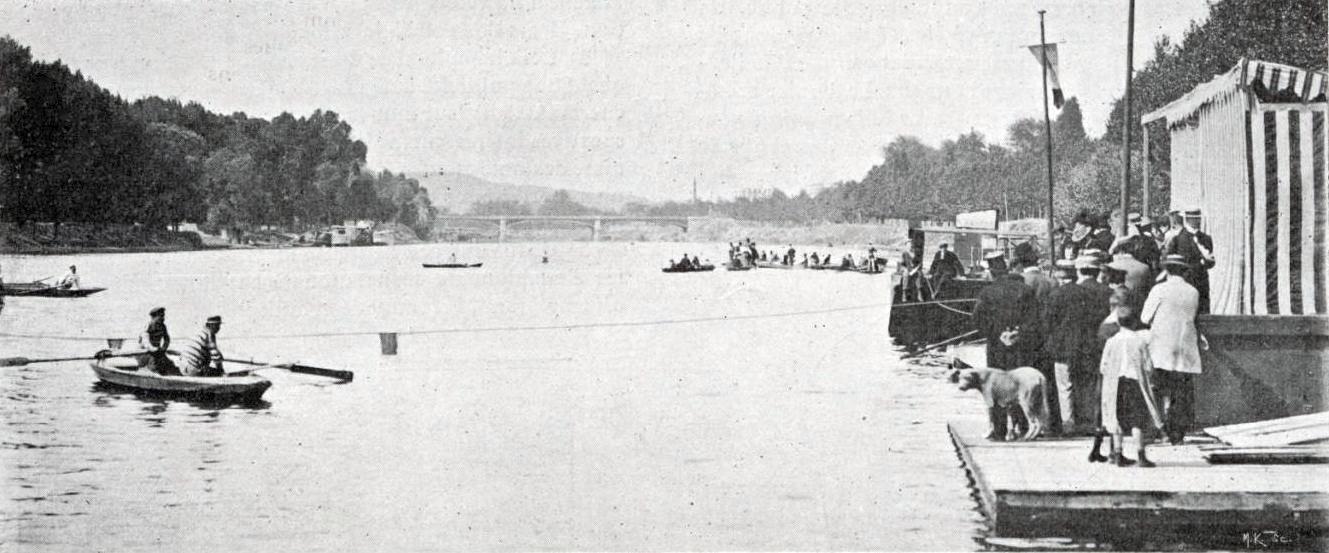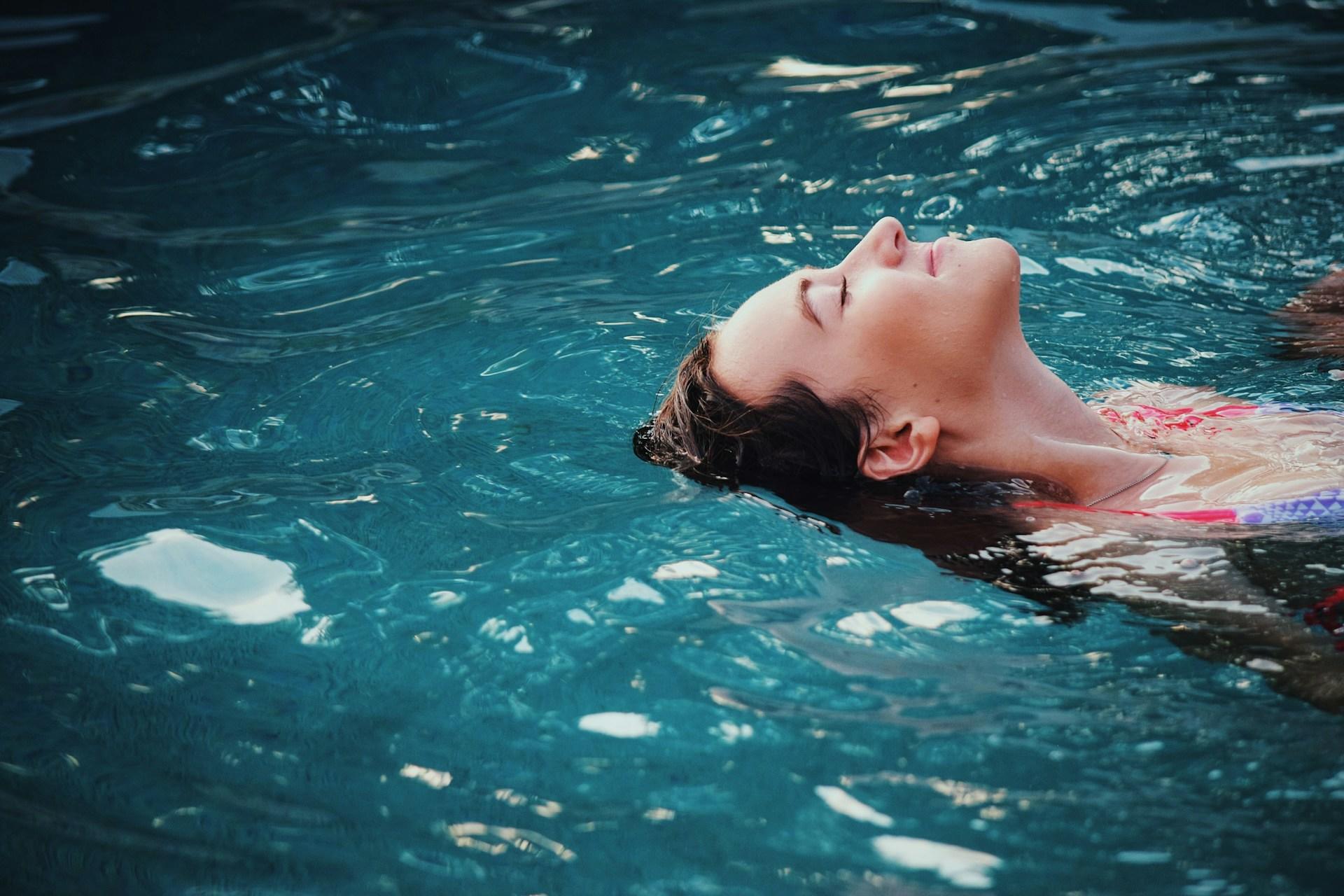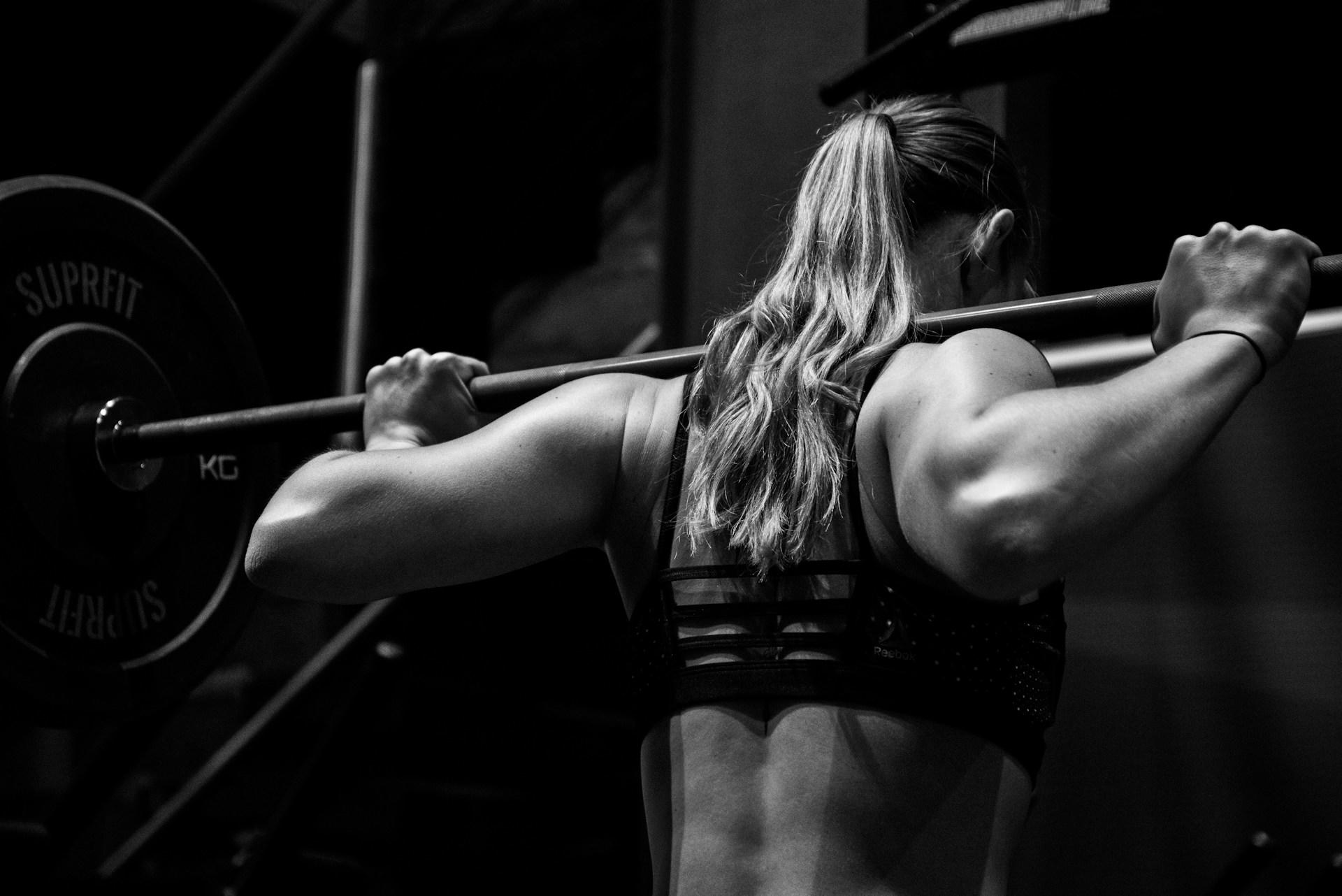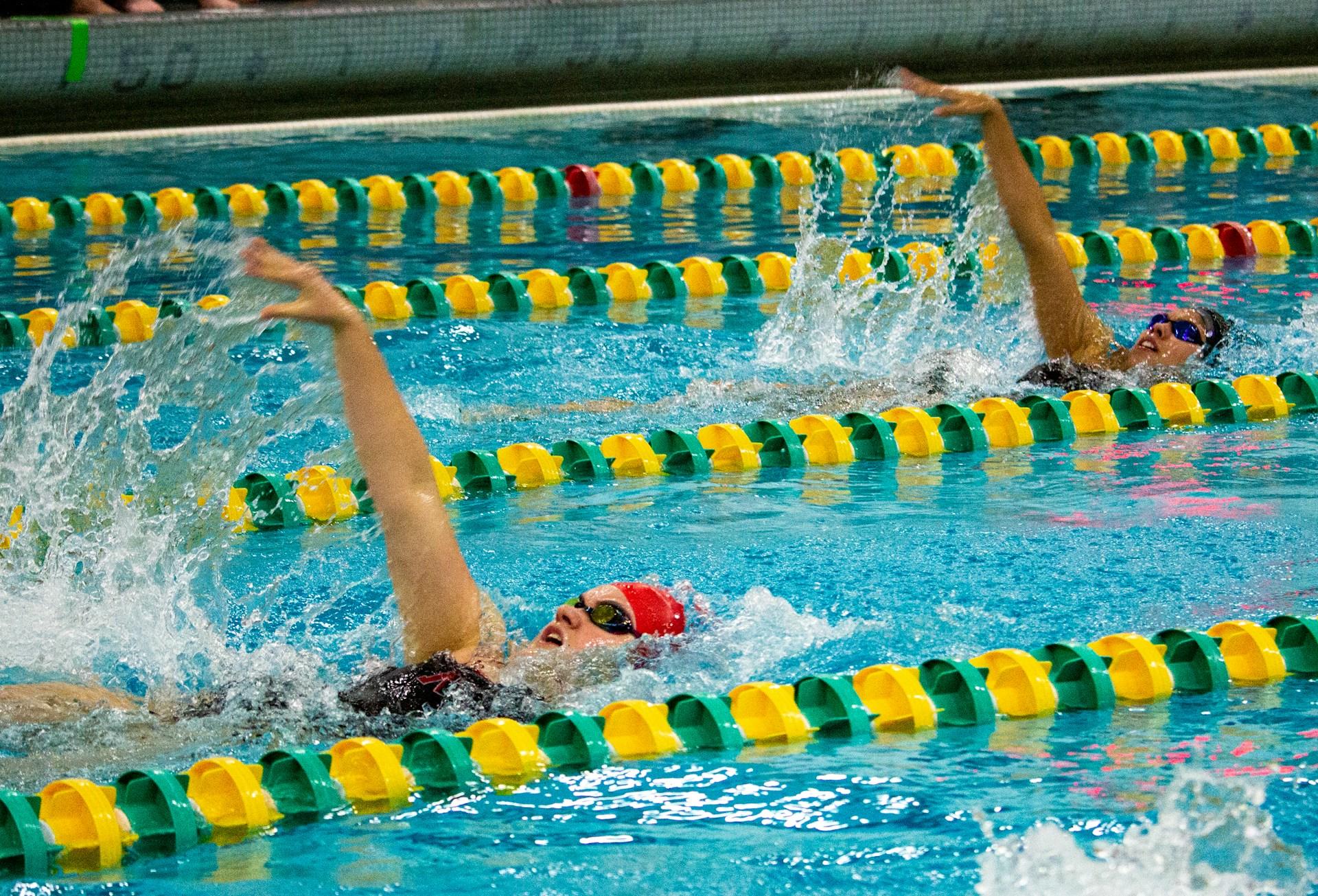The backstroke, also called the back crawl, is one of the most popular swimming strokes, and was one of the first varieties to be added to the Olympics, too.
Some people think of it as an upside-down front crawl, as the motion is relatively similar, both using long-axis strokes to generate the movement. Of course, this is the only stroke where you are actually on your back throughout, and it is also the only competitive stroke of swimming (such as Olympic swimming) that requires the competitors to start in the water rather than performing a dive in to begin.
In this guide, we're exploring the backstroke swimming stroke, and how it can be a good technique for beginners who want to build their skills.

What Is Backstroke Swimming?
As you probably already know (or have garnered from the name), in backstroke, swimmers lie on their backs, facing upwards, and propel themselves through the water using an alternating arm and flutter kick technique.
The backstroke is one of the four competitive swimming strokes, along with freestyle, breaststroke, and butterfly, and is often chosen by swimmers who find comfort in swimming on their backs or struggle with the breathing techniques in other strokes. For beginners, it can be easier knowing that you can breathe more freely throughout.
Though the back crawl or variations of swimming backstroke have been popular for centuries, it wasn't until the early 20th century that backstroke swimming became recognized as a distinct competitive stroke. In the late 19th and early 20th centuries, swimmers experimented with various techniques, but the backstroke was one adopted by the biggest tournament for swimming, the Olympics. In 1900, the first backstroke 200 meter event was won by Ernst Hoppenberg of Germany, with Karl Ruberl of Austria coming in second place and Johannes Drost of the Netherlands third.
of Austria
the Netherlands
Interestingly, the venue was outdoors, and the event did not take place again until the 1960s after a hiatus.

Backstroke has undergone some evolutions through the years. In the 1988 version of the Olympics, the USA’s David Berkhoff qualified for the tournament using a technique known as the ‘Berkhoff blast-off’. This meant he would dolphin kick underwater for as long as possible, gaining a faster start than the others. By the final, all medalists were using this technique.
Now, the backstroke swimming technique remains a popular and widely practiced swimming style, with swimmers of all ages and skill levels enjoying its unique benefits. From recreational swimmers leisurely gliding across the pool to elite athletes racing at record-breaking speeds in Olympic competition, backstroke continues to be one of the biggest strokes in terms of popularity.
The Fundamentals of Swimming Backstroke
Backstroke swimming techniques can be a great way to start swimming for beginners. In fact, learning how to swim backstroke is how a lot of people get started. They can learn how to do the back crawl after becoming comfortable on their backs in the water, and unlike some other forms of swimming stroke such as the butterfly stroke or some forms of the breaststroke, it doesn’t make it harder to breathe.

There are some very basic steps to get right if you want to start swimming backstroke.
- Body position: Start by lying on your back in the water, with your body stretched out horizontally and your face looking up toward the sky or ceiling. If you are an absolute beginner this may not feel totally comfortable, so get used to floating first and foremost. Keep your body as flat as possible, with your head in line with your spine and your hips close to the surface of the water.
- Arm movements: Start the stroke by moving one arm forward above your head and the other arm extended backward along your side. As your arm reaches full extension, initiate the pull by bending your elbow and sweeping your arm in a circular motion outward and downward toward your hip. Keep your hand relaxed and your fingers slightly apart to minimize resistance as you pull through the water. As the first arm pulls, the other arm should recover by sweeping upward and over the water's surface to return to the starting position.
- Leg movements: Use a flutter kick with your legs to provide propulsion and maintain momentum, this is something used in a lot of different forms of swimming and types of strokes. Keep your legs straight and relaxed, with your toes pointed and ankles flexible.
- Breathing: One of the big benefits of this swimming stroke for beginners. Breathing in backstroke is natural and requires no special effort, as your face remains above the water throughout the stroke. Inhale and exhale freely as you swim, taking advantage of the ease of breathing while lying on your back.
With these tips, you should be able to get started and propel yourself through the water on your back. These are the very basics, so beginners can use them to start swimming backstroke in their local pool or while on a vacation.
Without seeing images or video it can be hard to envisage, but the video above shows what you should be doing with your legs, arms, hips, and body while you propel yourself forward using the backstroke.
Tips for Improving Your Backstroke
Perhaps just being able to swim backstroke isn’t enough for you. You might need to continue working on your skills if you want to become a professional or be the fastest you can possibly be, and as well as loads of time in the pool, you may also be spending a lot of time on strength and conditioning in the gym.

Improving your backstroke and using some of the more advanced techniques is going to take a little longer than just getting to grips with the basics, of course, but there are plenty of methods you can use for improving your stroke and being in the top percentage of backstroke swimmers.
- Work on your kick: You will use the flutter kick as a source of propulsion in backstroke. Practice kicking drills to improve your leg strength and coordination, such as vertical kicking or kicking with a kickboard, can make all the difference. Focus on keeping your legs straight, toes pointed, and ankles flexible. You can work on your strength in the pool or in the gym.
- Work on your breathing: Though this is not as important as some other forms of swimming, being able to breathe rhythmically and consistently in backstroke can help. Take advantage of the natural breathing pattern while lying on your back and get used to using bilateral breathing to improve balance and symmetry in your stroke, inhaling and exhaling smoothly as you swim.
- Enhance the rotation: You can use rotation into your backstroke technique to maximize power and efficiency. Experiment with slight rotation from side to side, engaging your core muscles to facilitate rotation while maintaining stability and balance in the water. This is something that takes a bit of practice if you are going to get it right.
- Practice drills: Of course, if you want to be good at this, you are going to need to work at it – incorporate backstroke drills into your training routine to target specific aspects of your technique. Focus on drills that emphasize body position, arm technique, kick strength, and breathing coordination to address areas for improvement and refine your stroke mechanics.
- Feedback can be key: Try to work with a coach or experienced swimmer to receive feedback on your backstroke technique and identify areas for improvement. This is one of the key ways that you can see where you are going wrong and what potential areas of weakness are. Incorporate video analysis and stroke clinics into your training regimen to gain valuable insights and guidance from knowledgeable instructors.
- Practice turning and starting: These techniques are not crucial to the actual backstroke swimming stroke, but in any form of competitive swimming people need to be able to push off properly and turn efficiently if they don’t want to lose valuable seconds to the others that are taking part in the competition.
Becoming one of the best is not something that is simple or can be achieved quickly. Swimmers who reach a competitive level know more than just how to swim backstroke, they know the exact ways to boost their chances in tournaments and areas of their body and skills to work on.
Learn to Swim with Superprof
Ready to learn how to swim the backstroke? Superprof can help. We can connect people with swimming tutors and coaches all over the US and beyond, helping you to find the right coach to perfect your techniques and to get you ready to race.
You may be young and at an early stage of your journey and just want to learn the basic swimming techniques to be able to swim backstroke (or other swimming strokes such as breaststroke or even butterfly). On the other end of the spectrum, you may already be a top swimmer looking to make the sort of marginal gains that can take you to the next level. Whatever your goals, you can find the ideal tutor today right here on Superprof. Start your search now.















